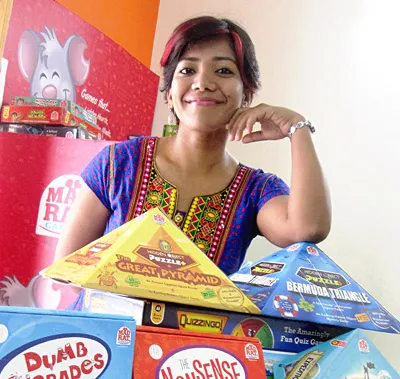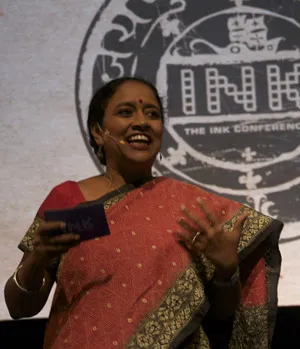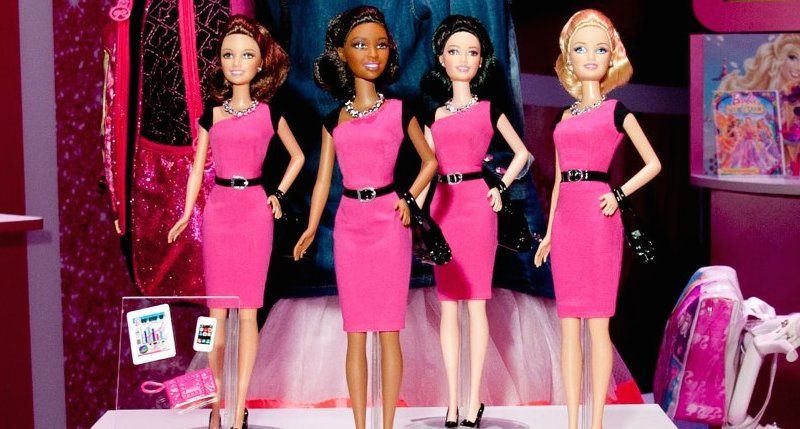Will Entrepreneur Barbie lure Indian girls towards a new career choice?
Mattel Toys, maker of Barbie, has always sold dreams to little girls. ‘The possibilities are endless when you experience the world with Barbie,’ declares her Twitter profile. This time though, the ‘big dreams are not sold separately!’

The latest edition of Barbie dolls, instead, has a new dream career – entrepreneurship! The company hopes that along with her tablet, briefcase and a smartphone, Entrepreneur Barbie will show girls that there’s more to her than a pretty blonde head, long legs and an impossibly thin waist. In case they miss the point, she has the backing of eight ‘real’ women entrepreneurs in the US, who serve as her ‘Chief Inspirational Officers’ (CIOs). The impressive board includes Reshma Saujani, Founder of Girls Who Code; Susan Feldman and Alison Pincus, Founders of One Kings Lane; and Jennifer Hyman and Jenny Fleiss, Founders of Rent the Runway, among others.

The role of these highly accomplished women is to begin a conversation around entrepreneurship as a career option for women in the highly male-dominated Silicon Valley. Coinciding with the launch of the doll at the New York Toys Fair on June 18, many women entrepreneurs took part in a Twitter chat using the hashtag #BarbieChat. The campaign also includes a LinkedIn page for Barbie and a billboard in Times Square using the hashtag #unapologetic.
Since she made her presence felt in a striking pink dress (no drab business suit for her, please) with a hint of makeup and her long cascading blond hair neatly tied behind, Entrepreneur Barbie has had to take an equal measure of flak.“Of all the ways that Barbie has undermined real women, the fake plastic smile and false confidence is the most offensive, #barbiechat,” pointed out a tweet during the Twitter chat. “Whatever #entrepreneurbarbie. If you were real, your head’d still be too heavy for your body #BarbieChat,” said another.
#Unapologetic
Speaking to ‘Wired’, Reshma Saujani fended off such criticism saying, “You can’t be what you can’t see.” Reshma, who founded the non-profit Girls Who Code, has been an active proponent of gender parity in computing and other STEM fields (science, technology, engineering, and mathematics).
“Unfortunately we live in a culture where girls are bombarded with images of male coders and engineers that just don’t look like them. When you ask a girl what a computer scientist is, she usually pictures a geeky guy typing away. And then we wonder why girls don’t pursue careers in tech! We have to change popular culture and start showing more women - more cool, dynamic, creative women - in these roles,” she told ‘Wired’. Saujani suggests that parents and teachers should provide opportunities for girls to try coding as soon as possible with tools like HopScotch, a kid-friendly app that teaches programming skills.
Since Barbie was launched in 1959, she has had many avatars, including an astronaut, a CEO and even a Presidential candidate, and has come a long way since 1992, when she was programmed to say, “Math class is tough.”

Whatever her career choice, she has always flaunted her all-American blonde look with a figure to die for. It is this blatant promotion of an unrealistic body image that Barbie has often been criticized for. ‘Wired’ quoted a study by Oregon State University professor Aurora Sherman who suggested that playing with Barbies might even have a negative effect on the career opportunities of girls.
Aspirational value
In India, owning a Barbie doll was a matter of pride. Visiting relatives and friends living abroad were often requested to bring one along with them. Then the markets opened up and now little girls have an average of at least 10 Barbies in their collections. To cater to the Indian consumer, Mattel Toys Indiaized the Barbie with bridal wear and sari but kept the blonde look intact for many models. Today, a single piece Barbie is available for a modest Rs 290; something that makes a good birthday present for daughters and nieces.
When I was growing up, we could not afford a Barbie. But I would make some excuse to visit my sister’s friend who had them, says Madhumita Haldar, Founder, Director at MadRat Games.
“I was exposed to kitchen sets and dressing up other dolls so I was really fascinated with the Barbie. I would wonder why I was not like her. Her feet were always pointed like a ballerina’s and for a long time I thought there was something wrong with my feet,” recalls this young entrepreneur with a chuckle.

But the idea of an Entrepreneur Barbie, says Madhumita, is a welcome one. Echoing, Reshma Saujani’s argument ‘you can’t be what you can’t see’, Madhumita feels it is important to expose girls to different career options and not box career choices into gender compartments. “But of course, we need to communicate clearly that being an entrepreneur is all about accepting who you are. It is about having a positive self image; knowing our strengths and weaknesses and playing to our strengths. It is about having the confidence to stand out in a crowd,” adds Madhumita, pointing to the fact that girls should not mistake the pretty image of the doll to mean that that’s how entrepreneurs should look.
Speaking to YourStory, Adora Svitak, a child prodigy and a regular TED speaker, warns, “I hope that it (Entrepreneur Barbie) provides a positive image of what entrepreneurs do; however, I'm also concerned that it will associate Barbie's conventional traits of unrealistic beauty standards with entrepreneurship, and I want little girls to know that tiny waists and high heels are NEVER prerequisites for involvement in business.”
Business and women
In India, the number of women entrepreneurs can be counted on the fingers, at least in the tech domain. But as HerStory has witnessed, the number is slowly but surely growing. One of the main challenges that women entrepreneurs face in India is the lack of awareness about what a startup life entails. Check out our research into how women entrepreneurs are doing in India and the challenges they face.
Having said that, it is a fact that women entrepreneurs make a significant contribution to the Indian economy. According to a research report on ‘Improving Access to Finance for Women-owned Businesses in India’ in the MSME sector by the International Finance Corporation (a private sector arm of the World Bank) released in March this year, “Women in India fully or partially own around three million small enterprises across the country. Their businesses include everything from tea stalls and vegetable stands to laundries and cellphone shops. The women-backed businesses employ over eight million people in India.”

The report estimates that the total financial requirement for women entrepreneurs was $158 billion in 2012 but they only had access to around $42 billion from formal lenders. Only 27% of their money needs were met through formal lending institutions such as banks, cooperatives, micro lenders and other non-banking finance companies.
In the absence or lack of availability of funds, a majority of these budding businesses depend on informal avenues to raise money. That means that they have to turn to family members, friends and loan sharks to get the capital they need to start and expand.
The report suggests that banks need to find more ways to serve them. Male entrepreneurs get as much as 70% of their financing from formal lenders, depending on which industry and state they operate in.
More than 90% of India’s 90 million plus microfinance clients are women, according to the report. But microfinance is not enough. While the small loans serve the needs of small enterprises, they are not sufficient to help women grow their businesses and generate more employment.
Dream job?
“It is really tough being an entrepreneur, and I am not even talking about men or women,” says Lakshmi Pratury, Founder of INKTalks, alluding to a territory laden with risks and unknown dangers without the option of a safety belt. “The onus is always on the entrepreneur to prove themselves. They need to put in their own money first to prove that their idea is viable. It is only then that any VC will even think of putting in money, and even then it may not be enough,” she says, adding, “To women entrepreneurs I would say, be prepared for the long haul and make sure you are heard.” Lakshmi says she does not think she will ever gift the Entrepreneur Barbie to her niece.
It isn’t about realities so much as fantasies and possibilities, point out those in support of the Entrepreneur Barbie. “As children we are constantly creating a narrative for our dolls. Traditionally, girls defined their role as a care giver through storytelling in their play. With Entrepreneur Barbie, at least girls will have a new narrative. The United Nations has said that if we have to reach our millennium goals, we have to include women in the workplace. We have to change the way gender is defined,” states Kalpana Tatavarti, Partner at Interweave. She has worked with more than 1500 women across organizations enabling them to grow in their career.
Adora, who started out early (from age 12) as a motivational speaker talking about stuff like ‘What adults can learn from kids’ and is now going to college at UC Berkeley, adds that toys were very important in her life. “Being provided with Legos and blocks meant that I spent joyous afternoons with my sister building things; conversely, on the less productive side of things, having dolls (like Barbie) meant that I developed an understanding of traditional beauty standards that informed what I thought I should look like. I think that experience is common to many kids.”
As the pink aisles in large toy stores continue to stock Barbie dolls with their bedroom, kitchen and grooming accessories, it will be a while before our girls can get their hands on the Entrepreneur Barbie (has anyone seen the CEO Barbie or even the Techie Barbie that was launched in 2010?), and by then who knows she would have moved on to her next dream career!
Do you think toys impact children’s career choices? What was your favourite toy? Tell us.







